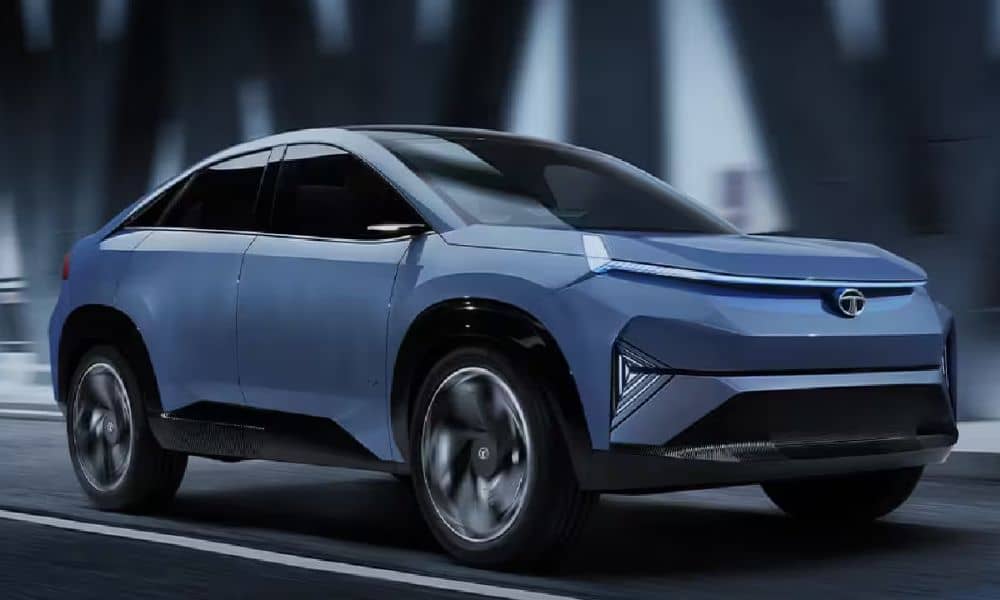India is eagerly anticipating the Tata Curvv electric SUV that promises exciting design, innovative technology, and a remarkable driving experience.
As with most new range electric SUVs, it will introduce numerous technical and performance challenges that may prevent wider adoption. Let’s explore some of the significant considerations for possible customers and the EV market.
Key Technical and Performance Challenges of Tata Curvv EV
| Challenge | Potential Issue | Possible Solution |
|---|---|---|
| Battery Efficiency & Longevity | Battery degradation over time; costly replacement | Advanced Battery Management System (BMS) & extended warranty |
| Range Accuracy | Real-world mileage lower than advertised | Optimize energy efficiency & provide realistic range estimates |
| Charging Infrastructure | Limited fast-charging stations; long charging time | Expand charging network & introduce ultra-fast charging |
| Extreme Weather Performance | Battery efficiency drops in extreme temperatures | Implement robust thermal management system |
| Driving Experience | Handling, acceleration, and ride comfort concerns | Fine-tune power delivery, suspension & aerodynamics |
| Software & Connectivity Issues | Infotainment glitches, slow OTA updates | Regular software updates & cybersecurity enhancements |
| After-Sales & Maintenance | Limited trained EV mechanics, high repair costs | Expand EV service centers & offer affordable spare parts |
1. Battery Efficiency and Longevity Concerns
The efficiency and lifespan of the Tata Curvv EV’s battery will play a key role in its long-term desirability. Like all EVs, the Curvv EV will likely use lithium-ion batteries, which degrade over time, ultimately affecting range and performance. Regular rapid charging, high or low temperatures, deep discharge, and/or overcharging will contribute to battery degradation, decreasing battery life.
If, over years of ownership, the Curvv EV does not perform consistently, consumers may not trust buying a second vehicle if they are worried about battery replacement costs.Battery replacement could easily be one of the largest costs in EV ownership.
If Tata does not support the ability to replace a battery over the long-haul, or does not offer a longer warranty, it is difficult to see the confidence in ownership as growing if battery replacement costs are too high.
Charging behavior and charging locations will contribute to the overall health of the battery too. Tata will need to consider all these factors to build greater confidence in battery usage, while providing more transparency in charging and battery management when required, as a best practice.
This best practice may include implementing a larger Battery Management System (BMS), a liquid or air cooling solution, or possibly a battery recycling program to support some level of sustainability and ownership value.
2. Range Anxiety and Real-World Mileage
Although Tata advertises the Curvv EV with a significant range, actual mileage can vary widely in practice, depending on the driver, road, terrain, and other, possibly climate-related conditions. However, use of air conditioning, highway speeds, or stop-and-go traffic may greatly decrease real-world range compared to advertised range.
Second, lack of charging stations is another factor contributing to range-anxiety. Cities are improving charging infrastructure, but fast charging stations or even slower level 2 stations are limited in many smaller towns or on highways. If the Curvv EV cannot meet a consistent and reliable range, consumers may not be willing to buy or move from petrol or diesel cars.
Tata must provide an accurate range, optimize energy consumption, and invest in an expanding charging network in order to create consumer confidence.
3. Charging Infrastructure Limitations
While larger cities have improved their networks of EV charging stations, smaller towns and highways remain under-served and long-distance travel becomes untenable. Fast-charging stations are especially important, as slow charging is one of the largest deterrents to buyers considering purchasing an EV.
Even in larger cities, crowded charging stations, slow or inconsistent charging rates, and incompatible charging plugs all induce frustration into the EV ownership experience.
The cost of installing a home charging station can also be a challenge to prospective buyers which is exacerbated when buyers do not have access to private parking.
For the Curvv EV to be adopted widely, Tata Motors must work in partnership with both public and private charging networks and with energy companies to expand charging networks, develop ultra-fast charging capabilities and ensure consumers can charge with no issues as they travel India’s roadways.
4. Performance in Extreme Weather Conditions
The suitability of the Tata Curvv EV for extreme weather conditions will play an important role in its general adoption. High temperature may result in battery thermal runaway, resulting in battery efficiency loss and faster battery death, as well as slower charging times.
Lithium-ion batteries in cold climates will also lose efficiency, resulting in a dramatic drop in range and lower, slower power delivery. In addition, high humidity and heavy rain may negatively impact electrical components, and may raise questions of electrical component water resistance and durability.
Without a thermal management system, the Curvv EV may have difficulty consistently performing in the diverse weather conditions of India. Tata Motors will need to address these challenges through advanced battery cooling and heating systems, weatherizing components, and pre-market testing of all component performance to extreme conditions.
If Tata Motors is able to manage the aforementioned concerns, the Curvv EV may be capable of reliability all year round, making it conceivable that the Curvv EV will be accepted by the Indian passenger vehicle market.
5. Acceleration, Power, and Driving Experience
The Tata Curvv EV is predicted to provide an advanced and sophisticated driving experience, however acceleration, power rating, and total handling will be main factors determining its attractiveness. In contrast to traditional internal combustion engines (ICE) SUVs, EVs provide instantaneous torque which creates acceleration that is quick, offers a refined climbing feeling.
Factors such as motor power, weight distribution, and driving modes determine if it performs well on highways or city travel. Handling and ride comfort is also very crucial, especially with long drives. A suspension that is well-tuned is a must, in order to maintain stability on uneven roads, while steering response and stopping performance will dictate overall driver confidence.
Additionally, cabin insulation and sound-proofing will add to the overall premium driving experience. In order to compete with ICE and hybrid SUVs, Tata must counter the Curvv EV to be performance focused, efficient, and envelope driving comfort, while being thrilling, yet completely practical for EV buyers.
6. Software and Connectivity Issues
The Tata Curvv EV is anticipated to offer sophisticated connected car technologies, but issues surrounding software reliability and connectivity may disturb the user experience. There is a heavy reliance on the use of digital interfaces, infotainment systems, and over-the-air (OTA) updates, and if these technologies are not optimized, glitches, slow responses, and crashes can occur.
If the touchscreen is slow, the navigation system does not work, or there is no integration with smart devices, consumers will feel frustrated and lose interest in the car. Further, there will be serious considerations regarding cybersecurity. As consumers increasingly turn to cloud-based services and share their car’s data, there is a potential for hacking and data breaches.
Tata Motors will have to ensure that they have strong encryption, a regular cadence for security updates, and OTA software upgrades. Further, consumers expect voice commands, AI-assisted technologies, and remote monitoring to function without glitches and seamlessly address drivers’ needs.
A smooth, satisfactory software experience is the best way to augment the modern driving experience; this will make the Curvv EV a feature-rich car and support consumer interest in the EV marketplace.
7. Maintenance and After-Sales Support
Although electric vehicles (EVs) typically have fewer moving parts compared to a traditional petrol or diesel car, it does require some level of specialized servicing, support, and maintenance to ensure an ownership experience that is free of issues.
One of the more significant issues for EV owners is the lack of trained mechanics and service centers that have the necessary knowledge and equipment to diagnose electric powertrains, battery diagnostics, and assist with software updates. The lack of expertise means that even minor mechanical issues may result in longer service wait times and higher repair costs.
Additionally, issues with battery replacements and their availability as spare parts come into play too. EV batteries are expensive to replace, and if the battery is not covered by a comprehensive warranty or subscription model, replacement costs competitors may determine shopping decisions.
Therefore, Tata Motors will have to build out its EV service network, while at the same time develop an affordable battery replacement program, and provide training to ensure technicians can address repairs that are cycle to the EV market.
Sustainability of the resale value depends on reliable after sales implication like service that is Artiel, a fast service turnaround, and reasonably priced. This will make the Curvv EV a viable long-term option for ownership.
Conclusion: Is Tata Curvv EV Ready for Mass Adoption?
Equipped with its futuristic design, advanced technology and driving experience, the Tata Curvv EV represents a major milestone in India’s electric mobility horizon.
The Curvv will need to address performance and technical issues in order to achieve its intended success. Battery performance and degradation over time are major technical hurdles, as battery performance over time will limit the Curvv’s range and dependability.
The Tata Curvv EV has the potential to do a lot for the electric vehicle segment, however addressing the technical and performance considerations will be a precondition for that to happen. Buyers will be examining Tata’s responses to range dependency, battery use, charging capacity, and the overall driving experience.
If there are answers to the sustainability of battery range or system components, and an ability to provide support beyond the purchase, the Curvv EV could become a major source of transformation within India’s electric SUV market.




